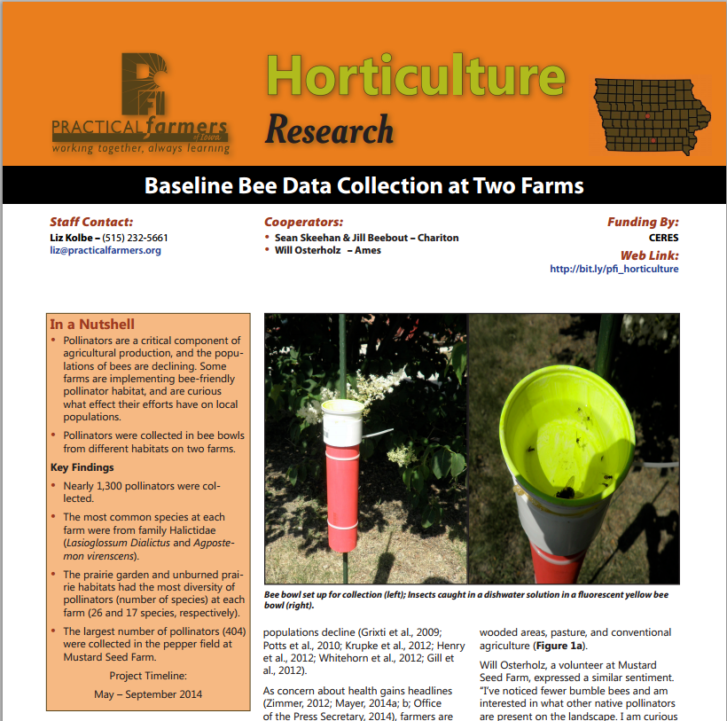RESEARCH REPORT: Baseline Bee Data Collection at Two Farms
As concern about health gains headlines, farmers are looking at their own fields, curious if their farm practices and habitat offerings are supporting native pollinators. “We assume we have good diversification of pollinators on our farm but want to confirm that and learn about the variety of pollinators,” says Sean Skeehan of Blue Gate Farm.
Two farms, Blue Gate Farm (near Chariton) and Mustard Seed Farm (Ames) participated in this PFI Cooperators Program research project. At each farm, four habitats were selected for sampling. At each habitat, nine bee bowls (three each of blue, yellow, and white) were set out at canopy height. The bee bowls were set out for four days each month (May – September), and samples were collected every 24-hours.
Key findings:
• Nearly 1,300 pollinators were collected.
• The most common species at each farm were from family Halictidae (Lasioglossum Dialictus and Agpostemon virenscens).
• The prairie garden and unburned prairie habitats had the most diversity of pollinators (number of species) at each farm (26 and 17 species, respectively).
• The largest number of pollinators (404) were collected in the pepper field at Mustard Seed Farm.
Want to know more? Read the full report!
Baseline Bee Data Collection at Two Farms
This research was supported by the Ceres Foundation.

